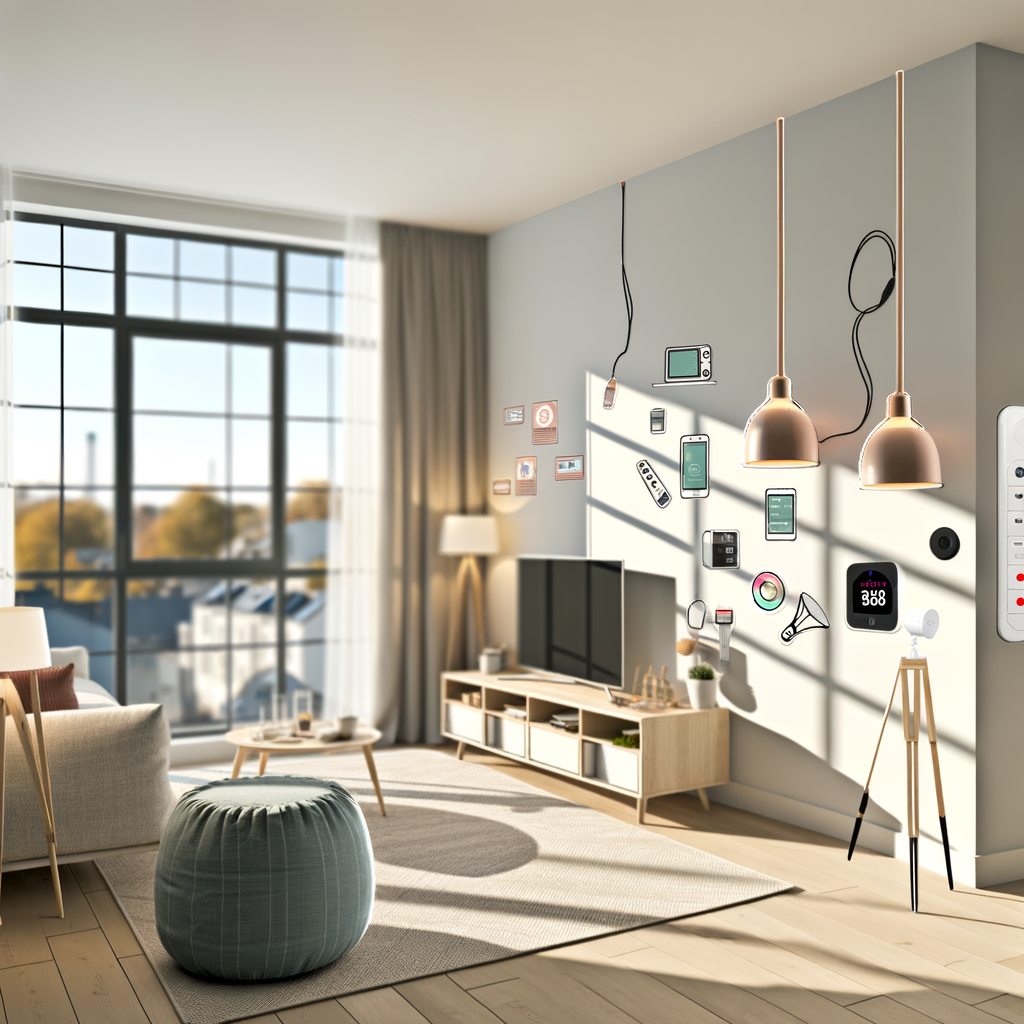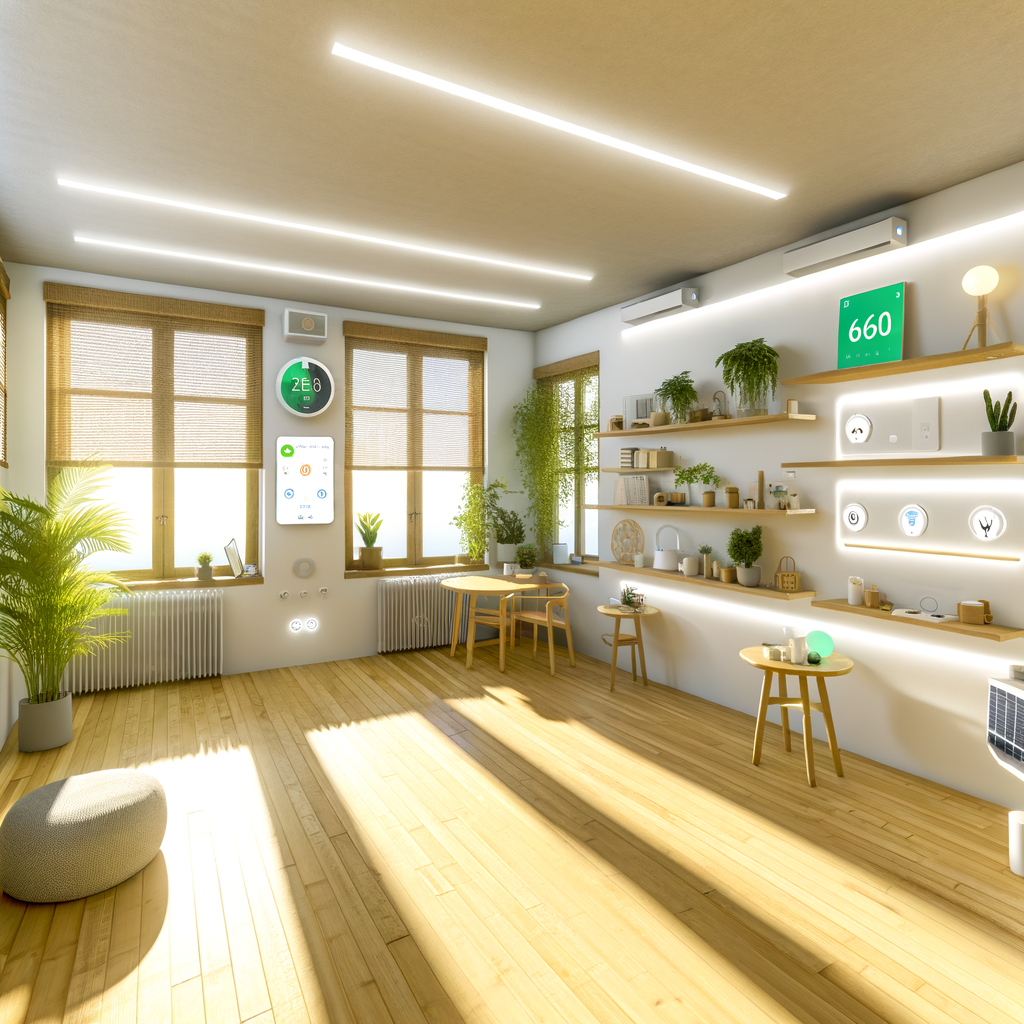How to Create a Smart, Energy-Efficient Apartment on a Renter’s Budget: A Step-by-Step Guide
Living green in a rental space doesn’t have to break the bank or break your lease agreement. With energy bills on the rise, improving your apartment’s efficiency is not only eco-friendly—it’s smart money management. This guide offers step-by-step, actionable strategies specifically designed for renters: no major renovations, no landlord headaches, just simple steps to create a smart, energy-efficient apartment without excess spending.
Why Focus on Energy Efficiency?
Energy-efficient apartments use less electricity and heating fuel, resulting in:
- Lower utility bills
- Reduced carbon footprint
- Increased comfort (better temperature control and air quality)
- Increased property value and marketability
Even as a renter, small steps can make a big impact. Let’s walk through the process.
Step 1: Assess Your Current Setup
Before investing in gadgets or making changes, understand your apartment’s strengths and weaknesses.
- List your major appliances: refrigerator, oven, air conditioner, etc.
- Check for drafts around windows and doors.
- Note your lighting: How many bulbs are incandescent or halogen?
- Review past utility bills to estimate consumption patterns.
This assessment is your baseline; you’ll measure improvements against it in the future.
Step 2: Prioritize Quick, Low-Cost Savings
Swap Out Old Light Bulbs
Incandescent bulbs waste up to 90% of their energy as heat. Replacing every bulb with LEDs or CFLs offers the following:
- Up to 75% less energy use
- Bulbs last 10-25x longer
- Cooler rooms in summer (less heat output)
Seal Air Leaks—Renter Style
Drafty windows and doors are silent energy hogs. Here’s what you can do without upsetting your landlord:
- Removable weatherstripping for doors and windows
- Draft stoppers (“door snakes”) at thresholds
- Removable window insulation film for winter
Use Smart Power Strips
“Phantom” energy use from always-on electronics and chargers can add up. Smart power strips turn devices off automatically when not in use, helping you:
- Slash standby power by 10-20%
- Protect your gear from surges
Step 3: Go Smart with Plug-and-Play Devices
You don’t have to hardwire your apartment for smart efficiency. Several renter-friendly (and portable) devices offer major upgrades.
1. Smart Plugs
- Turn any device into a smart device (lights, fans, coffee maker)
- Schedule shutoff times, monitor energy use, and control remotely
- Works with Alexa, Google Home, and other smart home systems
2. Programmable Smart Thermostats
- Portable models (like those with adhesive mounts or plug-in sensors) exist for renters who can’t alter wiring
- Set schedules or control temperature from your phone
- If you have a window A/C, smart plugs or Wi-Fi controls let you schedule runtimes
3. Smart Lighting Kits
- LED bulbs you can control (brightness, color, timing) via phone or voice assistant
- Group lights for entire rooms or zones
- Set routines for morning, sleep, or “away” modes
4. Smart Sensors
- Motion sensors for closets, pantries, bathrooms—lights turn on and off automatically for savings
- Remote temperature or humidity sensors for targeted comfort
Step 4: Optimize Heating and Cooling
Control Sunlight
- Thermal blackout curtains keep heat in during winter and out during summer
- Sheer or light-reflecting curtains reduce heat gain in summer months
Tip: Open curtains on sunny days in winter, close in summer afternoons to use (or block) natural warmth.
Use Portable Energy-Efficient Appliances
- Fans (especially ceiling fans in reverse in winter to circulate warm air)
- Evaporative coolers (“swamp coolers”) for dry climates
- Space heaters with built-in thermostats for just the rooms you use, rather than the whole apartment
- Smart window A/Cs or plug-in A/C controllers for scheduling and remote control
Step 5: Water-Saving Techniques
Install Removable Low-Flow Fixtures
- Low-flow showerheads and faucet aerators: Easy to install and remove—take them with you when you move
- Reduce water use by up to 50% without sacrificing pressure
Shorten Shower Time & Use Cold Water
- Showering just 2 minutes less saves up to 10 gallons per session
- Cold-water laundry slashes energy consumption (heating is 90% of laundry energy!)
Step 6: Kitchen and Laundry Efficiency
Upgrade Small Appliances
- Electric kettles use less energy (and heat up faster) than stove tops
- Microwave or toaster oven saves energy over using a large oven for small meals
Change Your Cooking Habits
- Batch cook using slow cookers or Instant Pots
- Use lids on pots to boil water faster and keep heat in
- Let leftovers cool before putting in the fridge to minimize extra work for your fridge
Smart Laundry Hacks for Renters
- Run full loads—fewer cycles use less energy overall
- Air dry clothing whenever possible (use indoor racks or balcony drying lines)
- Clean the dryer lint trap after each use to boost efficiency
Step 7: Monitor and Track Your Progress
Use Smart Meters or Plug-in Energy Monitors
- Track which appliances use the most electricity
- Identify energy vampires you can unplug or automate
- Some models even chart results—compare before and after your upgrades
Monitor Utility Bills Over Time
- Set calendar reminders to review billing trends every 2-3 months
- Celebrate each improvement—it helps reinforce good habits
Step 8: Build Energy-Saving Habits & Share with Roommates
- Unplug devices when not in use
- Set agreements on A/C, heating, and shower times
- Remind everyone to turn off lights when leaving a room
- Create a simple checklist posted somewhere visible (fridge, near doorway, etc.)
Bonus Renter Tips: Landlord-Friendly Upgrades
- Ask before installing window film, thermostats, or other minor upgrades—many landlords will say yes, especially if removable
- Offer to pay for simple upgrades in exchange for a rent discount or partial reimbursement
- Leave improvements in place (with permission) if you move




